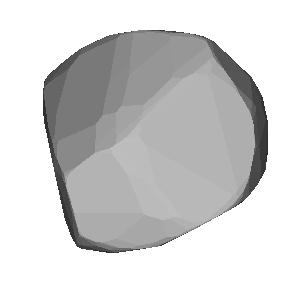1999-05-23 / TYC 1951-00705-1 / (68) Leto
| # | OBS | Observer | Occ | Meth. | Instr. | CC | TSRC | UT1 | UT2 | UT3 | UT4 | UT2E | UT3E | Dur. | Chrd |
|---|---|---|---|---|---|---|---|---|---|---|---|---|---|---|---|
| 1 | show | Bev Ewen-Smith | O+ | CCD | M150 | PT | RAD++ | 22:39:21 | 22:40:11.2 | 22:40:17.4 | 22:41:21 | 0.3 | 0.3 | 6.20 | 145.7 |
| 2 | show | Rui Goncalves | O+ | VIS | M254 | PT | RAD++ | 22:30:00 | 22:40:05.7 | 22:40:11.0 | 22:40:30 | 0.1 | 5.30 | 124.5 | |
| 3 | show | Alfredo Pereira | O+ | M250 | PT | 22:39:30 | 22:40:05.4 | 22:40:10.5 | 22:41:20 | 5.10 | 119.8 | ||||
| 4 | show | Carles Schnabel | O- | M210 | ES | 22:30:00 | 22:44:10 | ||||||||
| 5 | show | Alex Roca | O- | M200 | ES | 22:30:00 | 22:50:00 | ||||||||
| 6 | show | Raymond Dusser | O- | VIS | M100 | FR | 22:26:00 | 22:50:00 | |||||||
| 7 | show | Peter Drengubiak | O- | VIS | M150 | SK | 22:15:00 | 22:45:00 |
7 observations found in db: euraster
Available (probably) matching predictions (click on the link to switch):| JPL#133 : 4c68923a-e16f-4f4a-8fc8-ff5881bccf77 [db: observed] |
Using prediction 4c68923a-e16f-4f4a-8fc8-ff5881bccf77 for map and profile fit
| Ellipse and circular profile fits to the timings (chords) |
|---|
|
|
Auto-Fit Result: Ellipse profile fit was not successful. Trying circular fit. Circular diameter = 149 km From 3 chords (?,VIS,CCD) You can enter space separated chord numbers (example: 11 4 8) or a method like VIS to ignore all visual timings, or a time source like RAD and NTP (but not GPS). If the plot disappears, then there are less than 2 chords left (too much ignored, go back with browser). Check SiMDA for size and mass data. Check Johnston Archive for satellites. |
Sky projection (artificial light) for occ. time: 1999-05-23, 22:40 UT (JD = 2451322.444)
| DAMIT | Q | P (h) | λ, β | JD0 | JD-JD0 | φ0 | Version | Modified | Vol-equiv D | Cmnt |
|---|---|---|---|---|---|---|---|---|---|---|
| # 290 | None | 14.845 | 103°, 43° | 2.443737e6 | 7585.4 | 0.0° | size from AO is 112+/-14 km | 2013-07-23 | 148.0 +/- 25.0 km | 2011-02-11 |

Image size: 300px. Transparent image background for copy & paste
| Map with groundtrack and observer stations |
|---|
| Event Details |
|---|
Occultation UUID [and DB] : 4c68923a-e16f-4f4a-8fc8-ff5881bccf77 [observed] Occultation Date + Time : 1999-05-23 at 22:38:06 UT +/- 0.01 min [1] Object Designation : (68) Leto Orbit Class : MBA Star Designation : GDR3 0639324543642573952 Star Coordinates (ICRF) : RA = 09 17 31.7626, DE = +23 21 12.200 [2] Star Magnitudes : G = 10.25 mag, RP = 9.74 mag, BP = 10.59 mag Object Magnitude : V = 13.18 mag Estimated Magnitude Drop : 3.0 mag Estimated Max. Duration : 5.2 sec Object Mean Diameter : 123 km (src: astorb) Speed of the shadow : 23.5 km/s Elongation to Moon & Sun : 38° (sunlit = 67%), Sun = 72° Cross-track uncertainty : 2.3 mas = 5 km = 0.05 path-width (1-sig) RUWE and duplicate source : 0.87 mas, dup.src = 0 (0:false, 1:true) Ephemeris Reference : JPL#133 Object is a Gaia mass determination target ! [1] time t0 of closest geocentric approach c/a, [2] including proper motion until t0 |
| More Data and Informations |
|---|
(If error 404: link not valid which means no data available)
| Aladin Sky Atlas |
|---|
| Aladin Lite direct link (has Gaia overlay) |